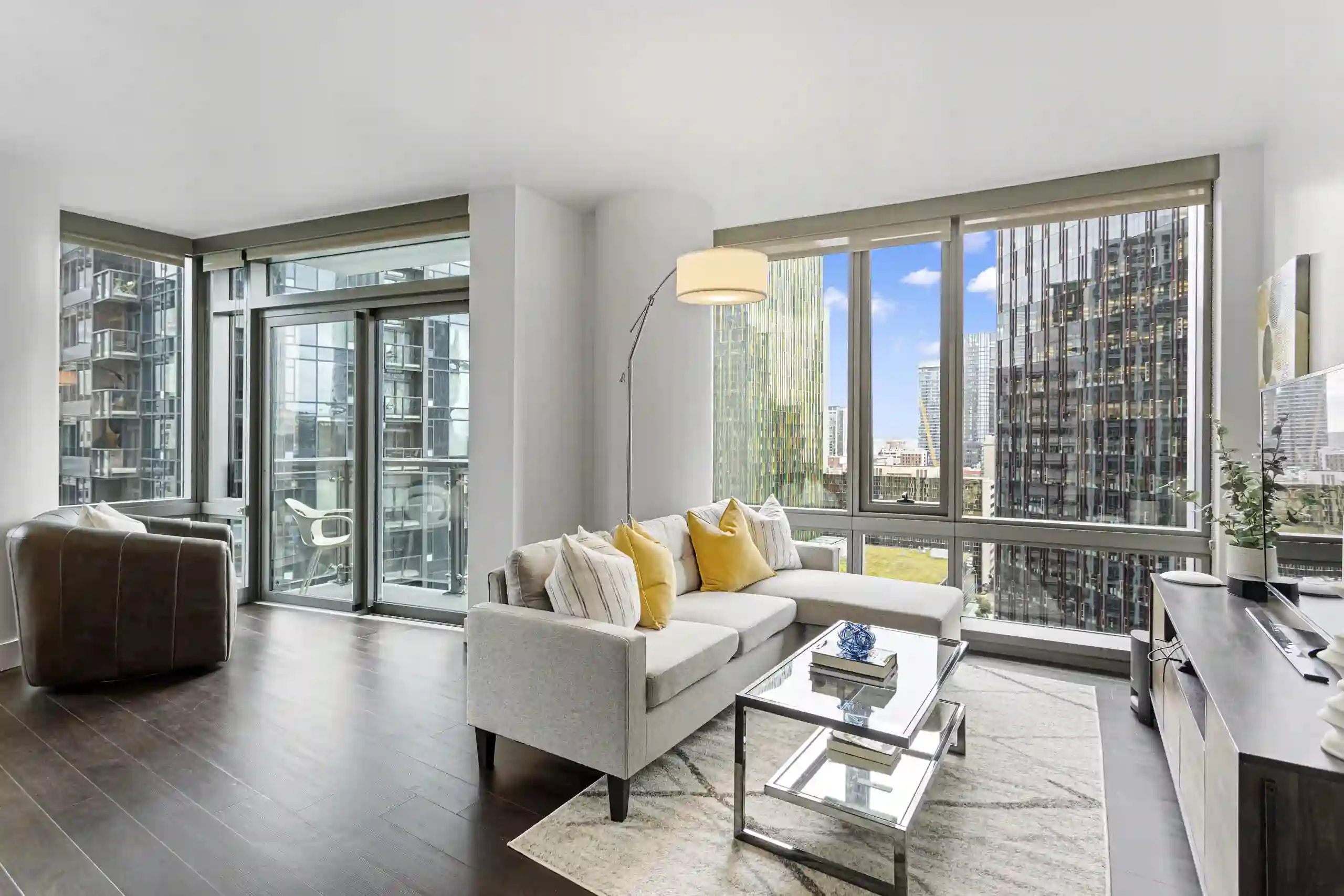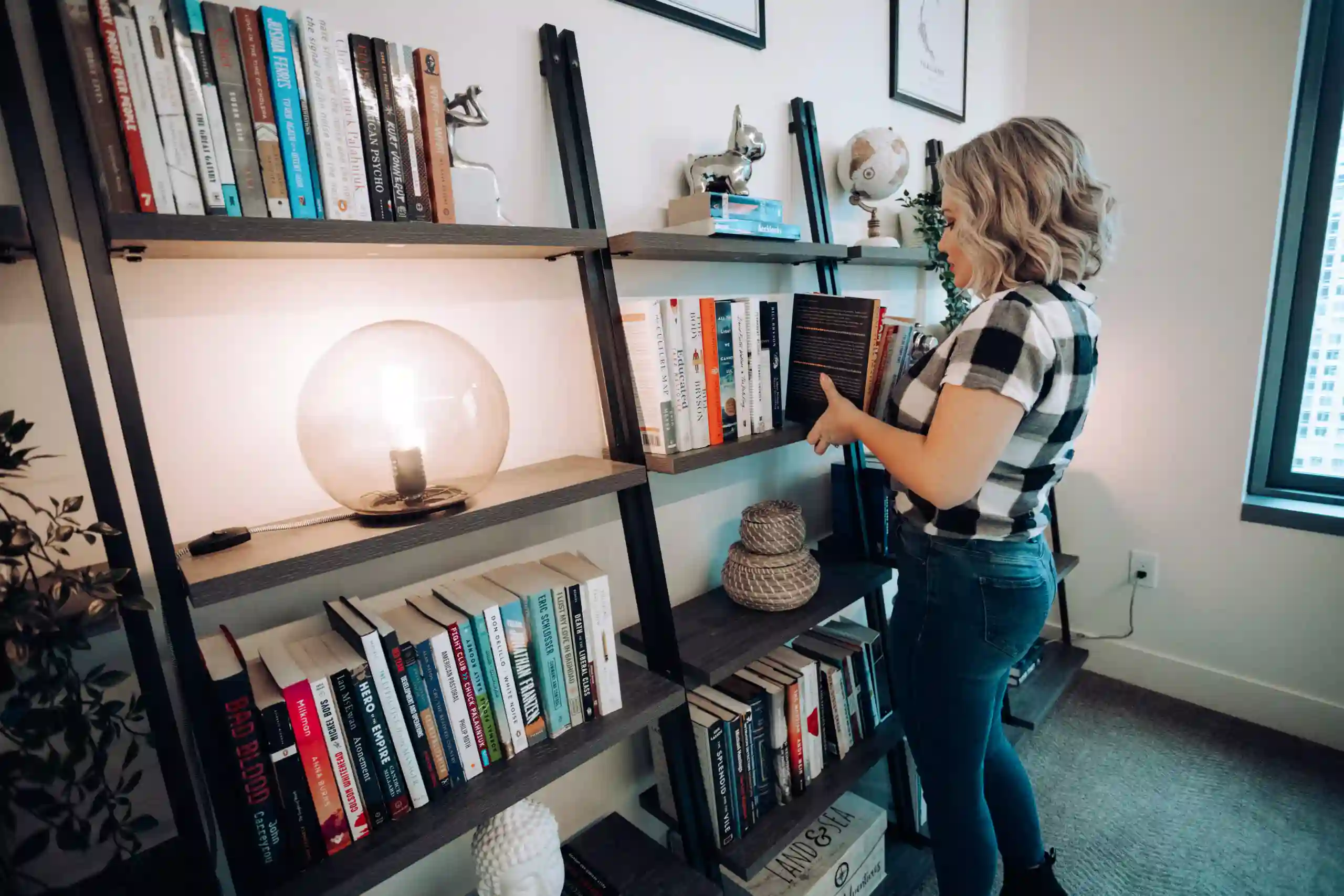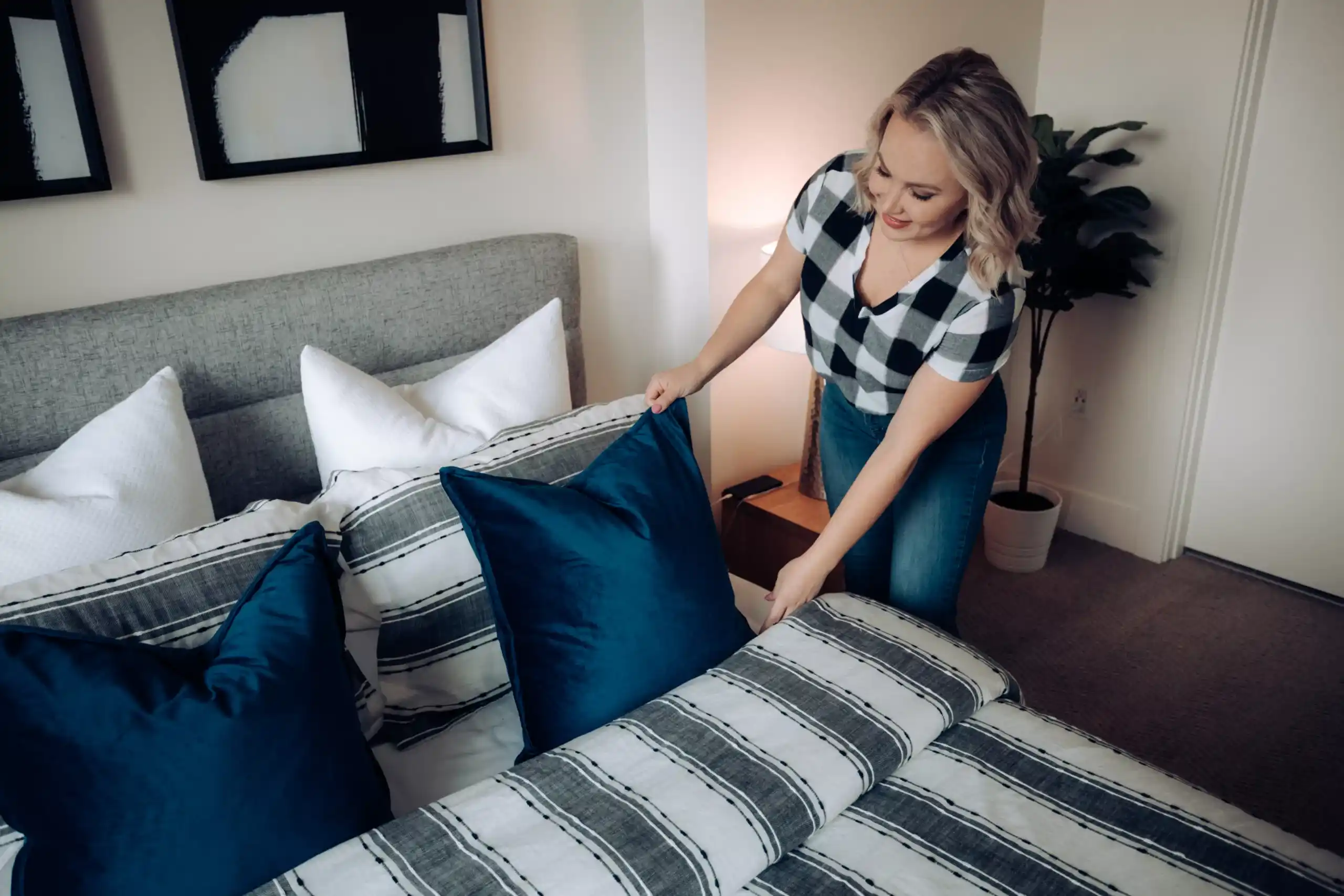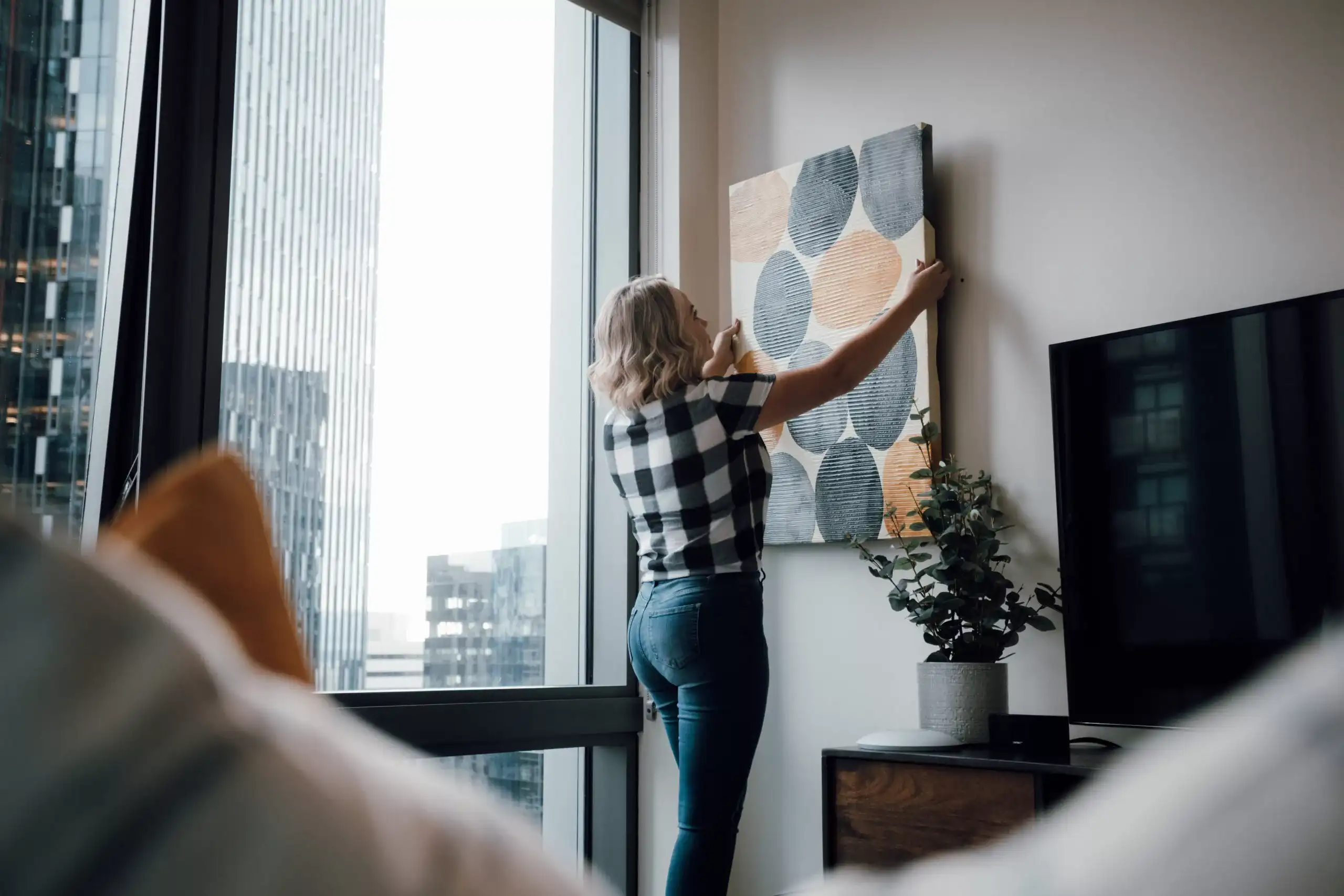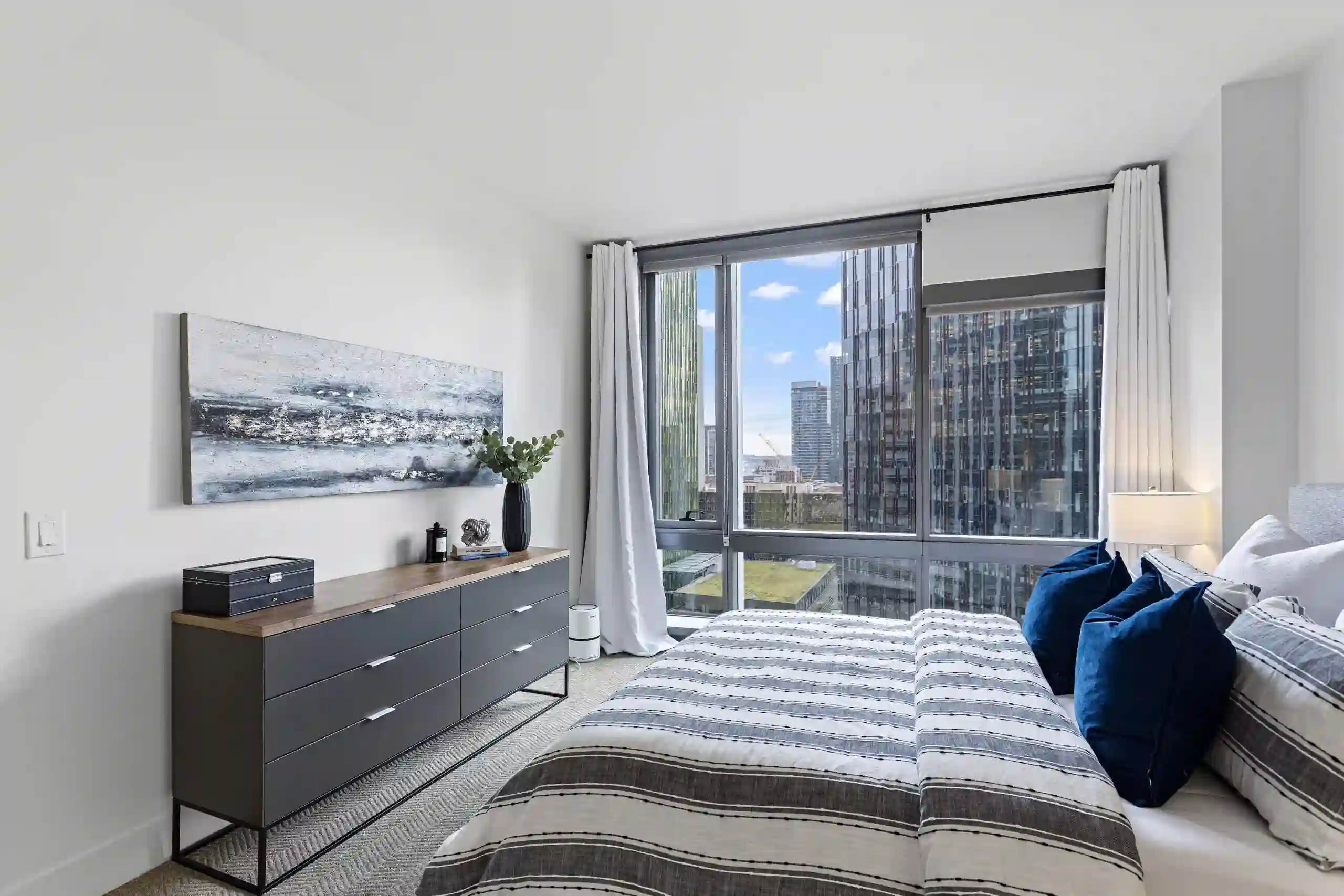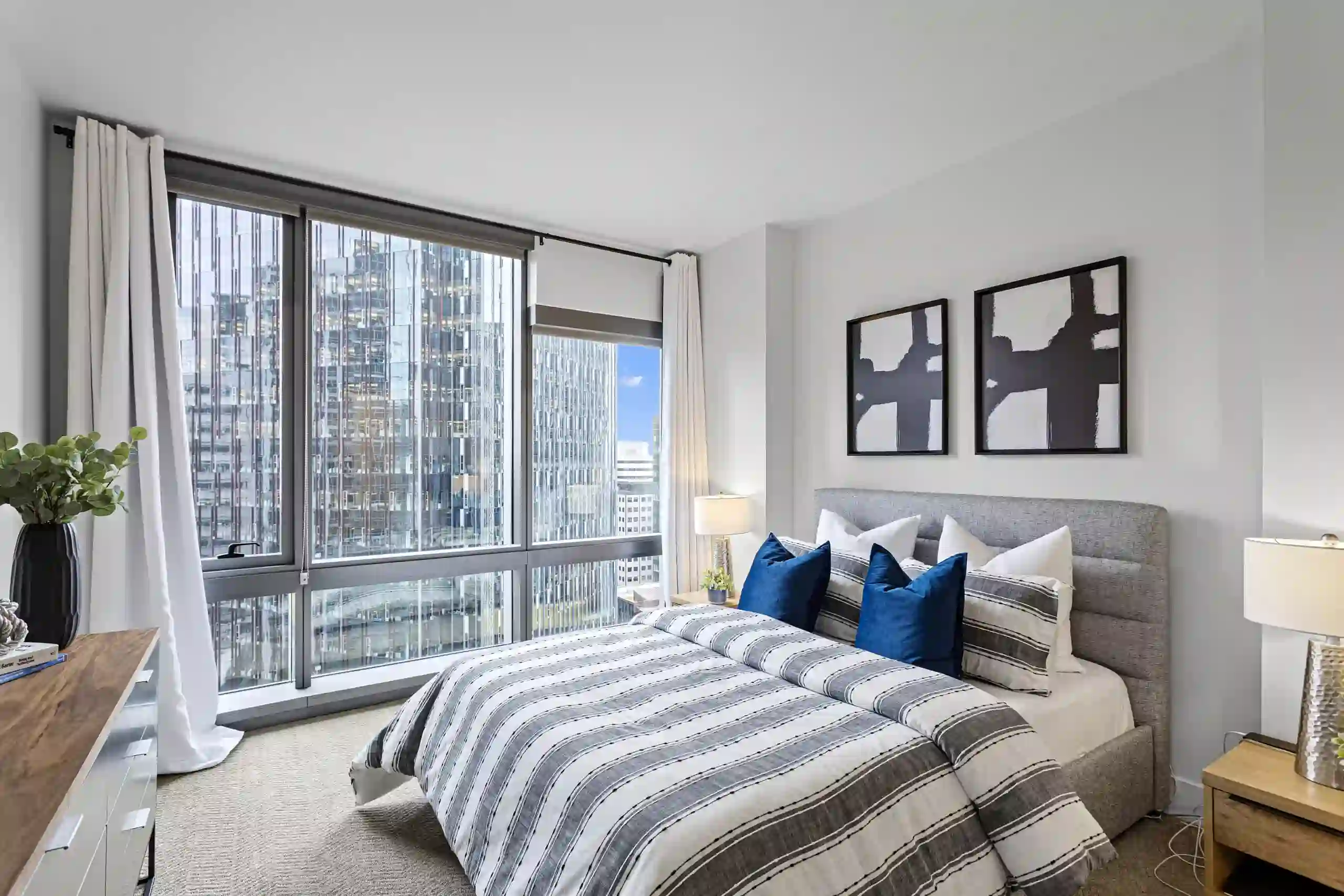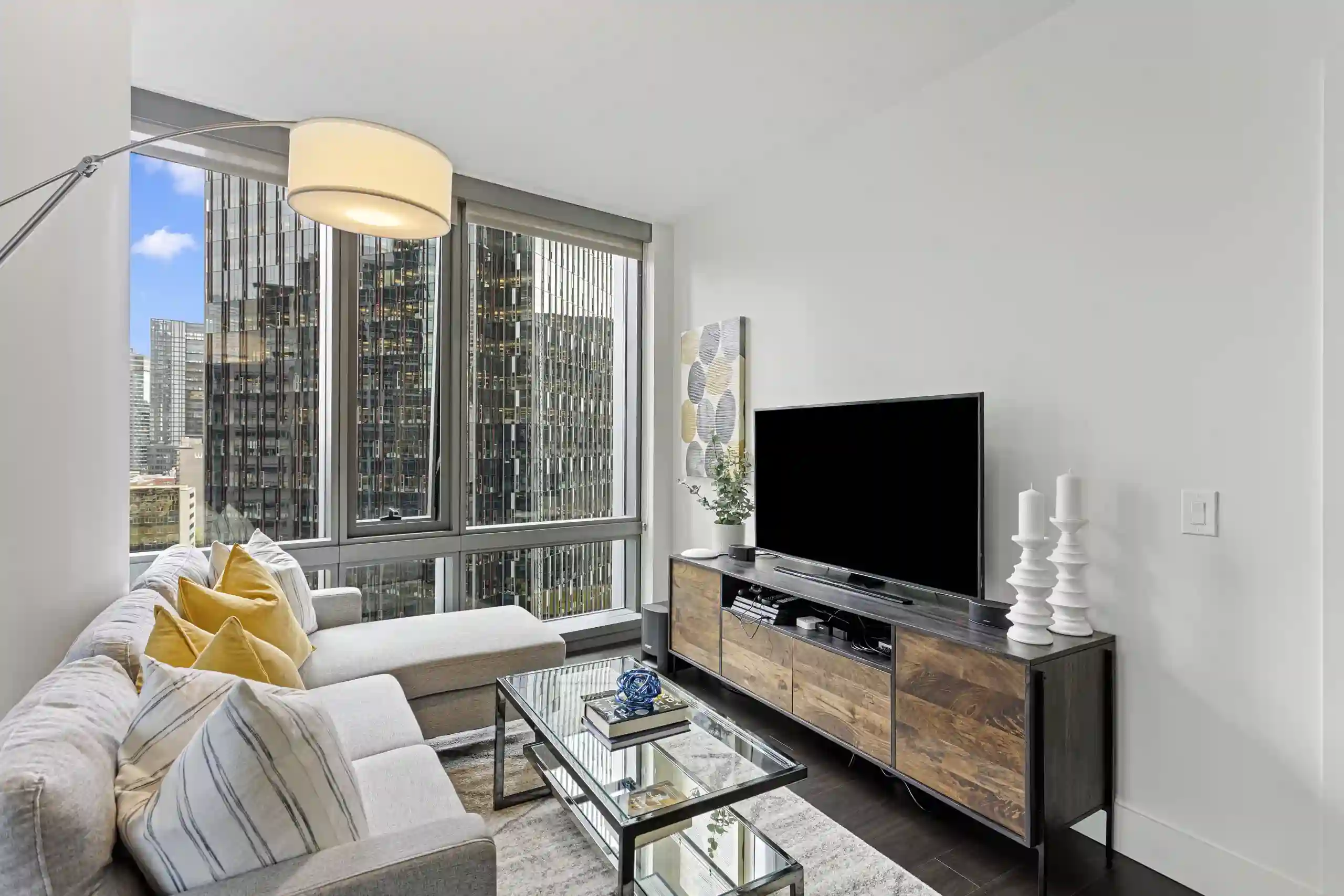Harmony Within: Crafting Spaces for Holistic Wellness Through Interior Design
In an era where wellness takes center stage, the intersection between interior design and holistic health has become increasingly pronounced. At its core, interior design for wellness seeks to cultivate spaces that nurture both the body and the mind.
Holistic spaces go beyond stylish furnishings and trendy color schemes. It’s prioritizing elements that promote physical health, mental clarity, and emotional balance by carefully selecting every facet of design to support holistic wellness. It covers everything from incorporating natural light and optimizing air quality to integrating biophilic elements and fostering a sense of tranquility.
So, whether you’re a design enthusiast, a wellness seeker, or simply curious about the intersection of design and well-being, join us in this journey as we discover how interior design for wellness can elevate both our spaces and our lives.
Maximizing Natural Light and Ventilation

Natural light and ventilation are essential elements of interior design for wellness, playing crucial roles in creating spaces that promote health and vitality. Natural light illuminates a room and regulates our circadian rhythms, promoting better sleep and overall well-being.
Additionally, it improves mood and productivity, fostering a sense of connection to the outdoors. Similarly, adequate ventilation ensures a constant flow of fresh air, reducing indoor pollutants and preventing the buildup of mold and mildew.
Proper ventilation also regulates humidity levels, creating a comfortable and healthy environment. By maximizing natural light and ventilation, interior spaces can become sanctuaries of wellness, where occupants thrive amidst the harmony of nature’s elements.
Crafting Ambiance with Artificial Lighting in Interior Design
Artificial lighting is a vital component of interior design for wellness, especially when natural light is limited. Thoughtfully designed lighting schemes can mimic the qualities of natural light, promoting mood regulation, productivity, and overall well-being.
Different types of artificial lighting, such as ambient, task, and accent lighting, serve distinct purposes in creating a balanced and functional space.
LED lighting, known for its energy efficiency and versatility, has revolutionized interior lighting design, offering customizable options to suit various needs and preferences. ‘Smart lighting’ systems enhance the user experience by allowing remote control and dynamic lighting intensity and color temperature adjustments.
Prioritizing Thermal Comfort in Interior Spaces
Thermal comfort is a cornerstone of interior design for wellness, influencing occupants’ overall satisfaction and productivity. It refers to the sensation of being neither hot nor cold but in a thermal equilibrium state, promoting comfort and well-being.
Achieving optimal thermal comfort involves carefully considering temperature, humidity, air movement, and radiant heat. Design strategies such as proper insulation, efficient HVAC systems, and responsive building materials play crucial roles in regulating indoor climate conditions.
Interior designers can enhance occupants’ quality of life, productivity, and overall health by creating spaces that maintain consistent and comfortable temperatures. Whether through passive design principles that leverage natural ventilation or advanced HVAC technologies, prioritizing thermal comfort ensures interior environments become wellness havens.
Achieving Zen with Clutter-Free Interior Spaces
A clutter-free space is not merely an aesthetic preference; it’s a fundamental aspect of interior design for wellness. A cluttered environment can lead to feelings of stress, anxiety, and overwhelm, inhibiting productivity and mental clarity.
By contrast, a minimalist and well-organized space promotes a sense of calm, focus, and overall well-being. Designing for a clutter-free environment involves thoughtful storage solutions, strategic furniture placement, and intentional decluttering practices.
Minimalist design principles emphasize simplicity, functionality, and the removal of unnecessary distractions, allowing occupants to engage with their surroundings and activities fully.
Incorporating ample storage options, such as built-in cabinets and hidden compartments, helps maintain order and tidiness, while strategic organization systems ensure every item has its place.
Embracing Biophilic Design for Healthier Living Spaces
Biophilic design, rooted in the innate human connection to nature, is a transformative approach to interior design for wellness. It seeks to integrate natural elements and processes into the built environment, fostering harmony, well-being, and sustainability.
By incorporating features such as indoor plants, natural materials, and views of greenery, biophilic design promotes a sense of calm, restoration, and connection to the outdoors. Research suggests that exposure to nature within indoor spaces can reduce stress, improve cognitive function, and improve creativity.
Moreover, biophilic design principles extend beyond aesthetics, including strategies for optimizing air quality, acoustics, and thermal comfort. From living walls to daylighting strategies, each element is carefully curated to emulate the therapeutic qualities of nature, ultimately creating environments that support physical, emotional, and psychological wellness.
Understanding How Color Influences Mood in Design
Color profoundly impacts mood and emotional well-being, making it a powerful tool for wellness within interior design. Different shades evoke varied psychological responses, influencing occupants’ perceptions and behaviors within a space.
Warm tones like reds and oranges evoke energy, passion, and warmth, while cooler tones like blues and greens promote calmness, serenity, and relaxation. Neutral colors like beige and gray provide balance and versatility, allowing other elements in the space to stand out.
By carefully selecting and harmonizing colors within a space, interior designers can create environments that support specific moods and activities. Whether incorporating soothing blues in a bedroom for better sleep or energizing yellows in a workspace to enhance focus, color plays a vital role in shaping the atmosphere and enhancing overall well-being within interior environments.
Elevating Interiors with the Beauty of Natural Materials
Natural materials are central to interior design for wellness, offering many benefits for both occupants and the environment. From wood and stone to bamboo and cork, these materials evoke a sense of authenticity, warmth, and connection to the natural world.
Unlike synthetic materials, natural elements contribute to improved indoor air quality by emitting fewer volatile organic compounds (VOCs), promoting a healthier living environment.
Additionally, their durability and longevity reduce the need for frequent replacements, leading to a more sustainable and eco-friendly design approach. Moreover, natural materials often possess unique textures, colors, and patterns, adding visual interest and character to interior spaces.
Creating Bedrooms That Invite Restful Sleep
Quality sleep is key for overall wellness, and interior design is crucial in creating a conducive sleep environment. Every element promotes restful sleep, from the bedroom layout to the choice of furnishings and decor.
Adequate lighting control, such as blackout curtains or adjustable dimmers, helps regulate the sleep-wake cycle by minimizing disruptions from external light sources. Comfortable bedding, supportive mattresses, and ergonomic pillows optimize physical comfort, reducing discomfort and promoting relaxation.
In addition, color psychology suggests using calming shades like soft blues and muted greens to create a tranquil atmosphere conducive to sleep. Clutter-free spaces and minimal distractions improve the sense of serenity and promote mental relaxation.
Embracing Sustainability in Interior Design
Sustainability is a guiding principle in contemporary interior design for wellness, reflecting a commitment to environmental responsibility and holistic well-being. Designers increasingly prioritize eco-friendly materials, energy-efficient technologies, and practices that minimize waste and carbon footprint.
From sourcing locally-produced materials to incorporating recycled and upcycled elements, sustainable design seeks to reduce environmental impact while promoting resource conservation and regeneration. Moreover, energy-efficient lighting, heating, and cooling systems lower operational costs and enhance indoor air quality and occupant comfort.
Beyond environmental benefits, sustainable design contributes to human health and well-being by creating healthier indoor environments free from harmful chemicals and pollutants. By embracing sustainability as a core principle, interior designers play a vital role in shaping spaces that nurture the well-being of occupants and contribute to a healthier planet for future generations.
Mastering Lighting Design for Every Room in the Home
Lighting is a cornerstone of interior design for wellness, profoundly impacting mood, productivity, and overall well-being. Thoughtful lighting design considers natural and artificial sources to create dynamic and harmonious spaces.
With its ever-changing qualities, natural light promotes circadian rhythm regulation, boosts mood, and enhances visual comfort. Incorporating large windows, skylights, and light wells allows ample daylight to flood interiors, fostering a connection to the outdoors.
Artificial lighting complements natural light and fills spaces with warmth and ambiance, offering flexibility for different tasks and activities. Layering ambient, task, and accent lighting creates depth and visual interest while providing optimal illumination for various needs.
Additionally, advancements in LED technology offer energy-efficient options that mimic natural light, promoting sustainability without compromising aesthetics or performance.
Transform Your Space: Experience Brilliance with Brilliant Staging Interior

Elevate your living or working environment with Brilliant Staging Interior Design in Seattle. Our expert team combines creativity and functionality to craft inspiring and refreshing spaces. From optimizing natural light to incorporating sustainable materials, we prioritize your well-being and satisfaction. Experience the transformative power of thoughtful design tailored to your lifestyle and preferences. Contact us today to bring brilliance to your interior spaces and unlock their full potential.




